1. Overview
In addition to enabling your computer hardware to carry out crucial functions, software may also improve the productivity of your company. New methods of working may even be sparked by the correct software. As a result, it is an essential company asset; thus, you should carefully choose your software to ensure that it meets your demands.
2. New software's business advantages
Consider what you want new software to do for you before investing. For instance, you may like to:
• Increase customer service;
• Reduce expenses by automating repetitive jobs
• Make it possible for your staff to work more effectively
• Use electronic means to interact and work together with partners or providers
Spend time discussing potential IT-based business process improvements with your staff, vendors, and clients.
Prioritize your list of the goals and possible advantages of new software as you write it down to determine the greatest return on investment.
Select software that is compatible with your existing hardware, if doing so does not negate any possible advantages. All expenditures related to hardware upgrades should be included in your budget.
As an alternative, consider outsourcing your software needs, such as for cloud computing, which may assist in lowering the cost of both software and hardware.
Making plans
Ideally, you should create a long-term plan that addresses your need for IT in the future. This should account for prospective changes in your clientele, personnel, and/or offerings.
3. Software kinds
You must understand the distinctions between the different kinds of software.
Customized
You may create software, particularly for your company. You have two options:
• Write the program yourself. Writing the software for you is not going to be cost-effective if you are a small company owner since it requires a great deal of experience and effort.
• Hire an outside vendor to develop the software. You should be able to acquire the precise functionality you want with expert assistance. But the cost will probably be significant, and you'll be stuck with that source for service in the future.
• Any custom software development may be time-consuming, and your employees will need to be involved in the process. Bespoke software may not be the best option for the majority of small enterprises.
Programs for systems or applications
Although system software does not directly benefit businesses, it does make computer hardware more valuable. The Microsoft Windows operating system is one instance.
Application software, such as word processing or accounting, is developed with a particular purpose in mind. Both of these kinds of software are required.
Software that is packaged
For small organizations, standard software packages are often the best option. If the program doesn't include every feature you desire, it may be customized to fit your needs in certain situations.
Software that is packaged is often inexpensive and standardized. Rather than having software specifically built, it could instead make sense to modify your company procedures to fit the software.
Because packaged software is sold in large quantities, it is common to be able to get support and training from several vendors.
4. Software that is both proprietary and open-source
A programme created by a provider and made accessible for use under an end-user license agreement (EULA), which you essentially accept when you install the program, is referred to as proprietary software. The license specifies the usage of the program and often forbids you from carrying out certain actions, such as:
• duplicating the software and transferring it to others; or
• selling your license to another person.
Source code is often not provided with proprietary applications. This is the code that the coder first wrote. You cannot alter the program package without this code, and neither can any other software provider.
Purchasing a proprietary software package permits you to use the program in a certain manner; you are not purchasing the software. The software is owned by the software business.
The majority of commercial software programs are proprietary.
The license that comes with open-source software permits you to duplicate and distribute it to others. The source code for the program is included; you may modify it to suit your requirements.
Open-source software does have several licenses. While some licenses let you keep any modifications you make to the source code private, others mandate that you make them public. Before using the program or making any changes, you should read the license.
Open-source software is frequently available for purchase at a low cost or can be downloaded for free.
Among the benefits of using open-source software are
• Reduced fees for software licensing
• flexibility to use the software as you see fit;
• open standards that facilitate collaborative development;
• freedom to update software as it becomes more appropriate for your company.
The primary drawbacks are:
• Some proprietary formats, like the ".doc" format used by Microsoft Word, are so popular that alternative formats would not be as suitable for commercial use.
• Support may be hard to come by.
5. Permits for exclusive software
Purchase licensed software only, and save your original distribution CDs or hologrammed certificates of authenticity—or other evidence of ownership—safely.
A variety of license types are used to make proprietary software accessible.
Typically, shrink-wrap licenses are good for a single program installation. This is the most typical kind of software license that you will come across at brick-and-mortar businesses as well as online retailers.
It may be necessary for you to activate the software in certain versions of this kind of license. This enables the provider to verify that the program is installed on a single computer. Reactivating such software can be necessary in the event that the PC's hardware is modified.
When many people may use a piece of software at once, per-user licenses are typical. Typically, a license is granted for a maximum number of users.
Site licenses have much fewer limitations. Usually, you can have as many users in one place as you'd want.
Piracy of software
Since software licenses are sometimes pricey, it might seem tempting to purchase a single license for a program and duplicate it for several users. The software industry is guarded about its licensing income, and you and your company may be prosecuted if you are found out.
When purchasing software, be cautious since it may have been stolen by crooks. There have been instances of companies providing fully licensed systems based on operating systems or networking software that have been obtained illegally.
There is software that will look into the hardware and software that are operating on your PCs and compile an inventory for you. This is a wise purchase, both for resource management purposes and to refute claims that you are using unauthorized software.
6. SaaS, or software as a cloud computing
Documents, emails, customer data, company apps, and other assets may all be filed and accessed online, or "in the cloud," thanks to cloud computing. This enables them to be accessed on any computer or mobile device that has a web browser and an internet connection.
The flexibility of cloud computing is immense. It can provide you with access to the newest technology and expert support, all while helping you make the most of your limited IT budget. Before making a final choice, it's crucial to take into account a few possible drawbacks.
7. Selecting and purchasing software
When selecting software, there are several methods to get guidance and assistance, such as:
• Software or business consultants remember that they could be prejudiced toward the software they know—and software vendors remember that they might be biased as well.
• Trade and professional organizations
• The computer press this resource might be useful for learning about fundamental concerns
Record your company's activities.
Using boxes to represent processes and arrows to display papers, invoices, and other items as they enter or exit processes are just a few ways that diagrams may help you record your company more easily.
This kind of company documentation can assist you in identifying places where new software might enhance your operational procedures. When purchasing software, it will also assist you in communicating your company's needs and requirements to possible vendors.
Examine your list of specifications against the details you know about each package. Packages that don't fit your “must-have” list should be rejected. Choose the one that offers the most of your desired and beneficial features at a cost your company can afford from the others.
Extra expenses
In addition to the program cost, other expenses to take into account include support fees, potential upgrade prices, and the need for hardware improvements in order to fully use your product.
Adaptability in the future
It's important to think about whether your software will still work when your company grows. It should be able to handle more users if your clientele expands.
8. Installing, activating, and upgrading software
The majority of off-the-shelf software has often been sent on a CD-ROM. Typically, installing software just requires inserting the CD and providing answers to queries about where and how to install it. Nowadays, you can purchase and download a wide variety of software online, many of which have very easy installation instructions.
Applications and software that will be used by several workers will normally be placed on servers, which are larger, more powerful computers that are often found in protected office spaces. The necessary password and access permissions are needed for what may be a challenging procedure.
It may be preferable for companies with more than ten desktop PCs to configure them all with the same software. This will simplify the process of keeping them all current and ensuring that the program has the right license.
After installation, certain software has to be enabled. The program will ultimately cease operating even if you are able to use it without activating it for a short period.
Activation may be done over the phone or the Internet. After obtaining certain hardware specifications from the computer you are using, the software provider will provide you with an authentication code. This will enable the usage of the program. Reactivating the program can be required if the PC's hardware specifications change.
Updates for software
Installing updates and maintaining the most recent version of the system software is crucial. If you don't do this regularly, newly found security holes in your systems might be used against you.
Utilizing cloud computing will eliminate the requirement for software installation and configuration across the company. Rather, your cloud computing service provider manages all future maintenance and updates "off-site" for your company applications, which are delivered via the Internet.
9. Software assistance
A crucial consideration when selecting software is the accessibility of technical assistance.
Verify the location of the software support. For example, if the specialists are located in the US, phoning them will cost money, and due to time differences, they may not be accessible all day.
The software vendor could provide a discussion forum online where clients can post queries and get responses to issues. You may also try sending a direct email to the support staff of the program supplier, although they might not get back to you right away. To provide you with real-time assistance with any queries or issues, several software suppliers additionally offer instant chat support with a member of their staff.
It matters how much the assistance costs. Do you still have to pay to get the software repaired if it is defective? It may be necessary, especially if help is available on a premium phone line.
A complimentary technical assistance time can be available to you while you install your program. Software support, however, is often billed for after a certain amount of time or after a predetermined number of inquiries. Examine the price closely.
More significantly, vendors could cease assisting earlier versions of their products. In cases when software upgrades are required to maintain security, this is a critical concern.
Resolving issues with your software promptly could be essential if your company relies on it. You will need a maintenance contract if this is the case, but always be sure to read the fine print.
Search around for the best deal, but make sure the provider can fulfill its commitments. While a more expensive provider might be less expensive overall if they can resolve issues in a matter of hours rather than days, a less expensive provider might not be very responsive and end up costing you more money.
Information technology events are organized by ProMunim of India. An advisor may also be reached via phone at 1800 266 1294.






